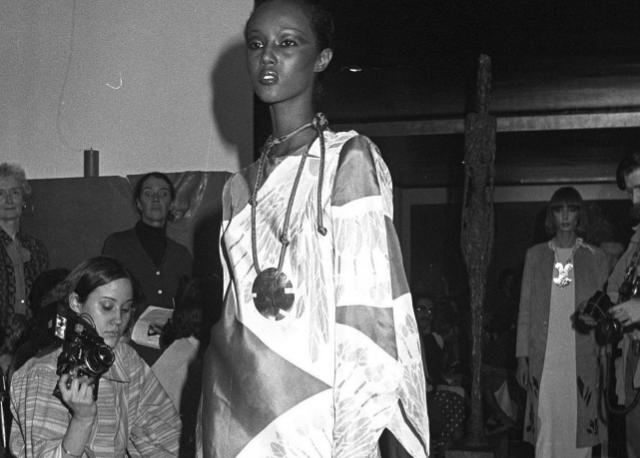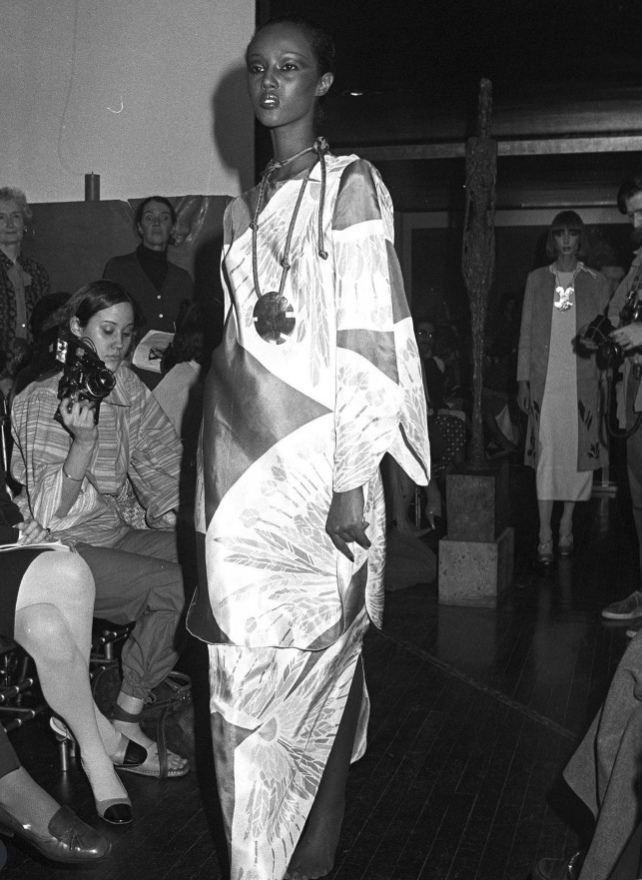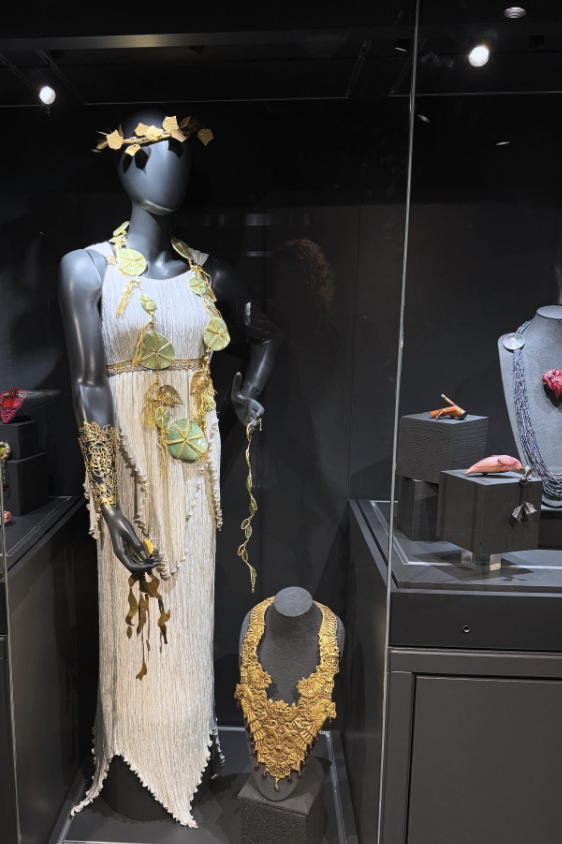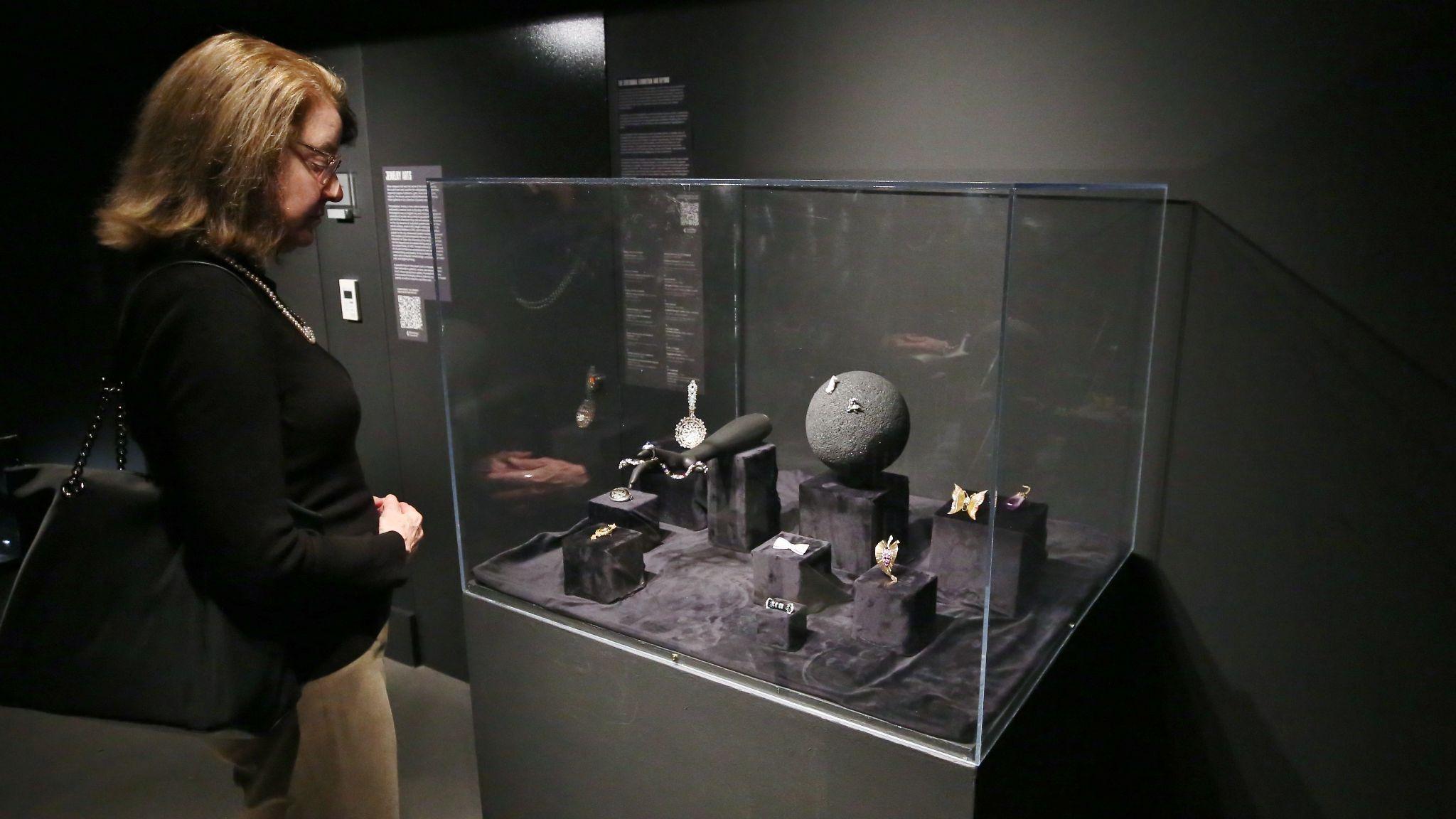Woodmere Highlights U.S. Fashion Icon in Their Jewelry Vault


“THE HIGH PRIESTESS OF FASHION,” exclaims the official Instagram account run by Mary McFadden’s Archive. High priestess, because of her ancient world inspiration, sphinx-like look, and the book Mary McFadden: High Priestess of High Fashion, from 2003. She passed away in 2024—leaving an archeologically minded legacy of clothing and jewelry designs that mix high and low materials and historical inspirations. Michèle Lamy has been dubbed a High Priestess for her great contribution to style and fashion, but also for her witchy aura, as has Coco Chanel. McFadden is in good company and her sophisticated design language deserves to be revisited often.

Two mannequins wearing gowns and layers of jewelry, and a headpiece, are on view in Woodmere’s new Jewelry Vault. Marking a major expansion into a whole new building, the Frances M. Maguire Hall, its jewelry galleries lie in the belly of the house, built in 1855. During a press tour, the museum’s director, William Valerio, explained that it was originally a secured room to store silver, jewelry, and heirlooms away from sticky hands in the nineteenth-century household, where staff probably outnumbered residents. Philadelphia was a leading industrialized city where many migrated as turnpikes, canals, and railroads extended the city’s reach. Historically, the the region has a strong tradition in furniture making, silversmithing, and silver- and electroplating, with a love for classical styles—all of which Woodmere wanted to reflect in the design of their new building. Its overall design is inspired by busy Victorian decor where time periods collide; there are light fixtures from the 1920s Boyd Theater throughout the house, for instance.

Not many museums dedicate galleries to modern and contemporary jewelry, or artist jewelers. In the U.S., the Museum of Arts and Design is a clear leader. Woodmere now jockeys for the position with its three new galleries. A relationship with the Mary McFadden Trust has allowed them to have a special focus on the designer’s work in their inaugural showcase. Marking a technological innovation a skirt made in a white polyester charmeuse, Marii, a fabric which McFadden patented in 1976, is on view. The material develops the secret patented process invented in 1909 by Henriette and Mariano Fortuny. However, Fortuny’s silk technique did not hold and clients regularly returned to his atelier to repress their wares. McFadden’s patented synthetic represented a technological innovation that held over time and was a staple of the fashion company she ran from 1976-2002. The charmeuse was sourced in Australia, dyed in Japan and machine-pressed in the United States, an article in the New York Times states.
All major hallmarks of McFadden’s design language is present in the Jewelry Vault showcase: Grecian styles, Asian and African motifs, pleats, beading, and braiding. There is a tiara, a jewelry piece that she often wore, in one gallery, and in the other a necklace that mixes plastic with metals is layered with a far more precious necklace with many strands of small ruby beads. Although her most famous pieces were designed for socialites, Jackie Kennedy Onnasis among them, she mixed high and low and also designed pieces that were more affordable.
Woodmere’s McFadden presentation shows how she made her muses into goddesses, with flowing silhouettes, enriched by ornamentation and exotic detail based on anthropological archetypes. She was the first female president of the Council of Fashion Designers of America (CFDA), during a time when the organization was more intimate, holding meetings at her studio in 1982-83. She also did some costuming for films, and, always the adventurer, was married eleven times.

Apart from McFadden, who was a New Yorker, the Jewelry Vault’s rich inaugural showcase (the checklist I received was forty-two pages) mostly centers on Philadelphian artists and makers, many of whom have studied or taught at Tyler School of Arts and Architecture. The school offers a unique jewelry, metals and CAD-CAM degree. Instead of plinths or pedestals, in one vitrine rings are presented in 3D printed hands designed by Theophilus Annor, whose 3D printed resin Hairpiece, 2025, is also on view. It incorporates synthetic hair. Revel in form, wit, and material innovation.
You Might Also Like
A Look Into Iconic Collaborations at Martha Graham Dance Company
What's Your Reaction?
Anna Mikaela Ekstrand is editor-in-chief and founder of Cultbytes. She mediates art through writing, curating, and lecturing. Her latest books are Assuming Asymmetries: Conversations on Curating Public Art Projects of the 1980s and 1990s and Curating Beyond the Mainstream. Send your inquiries, tips, and pitches to info@cultbytes.com.

